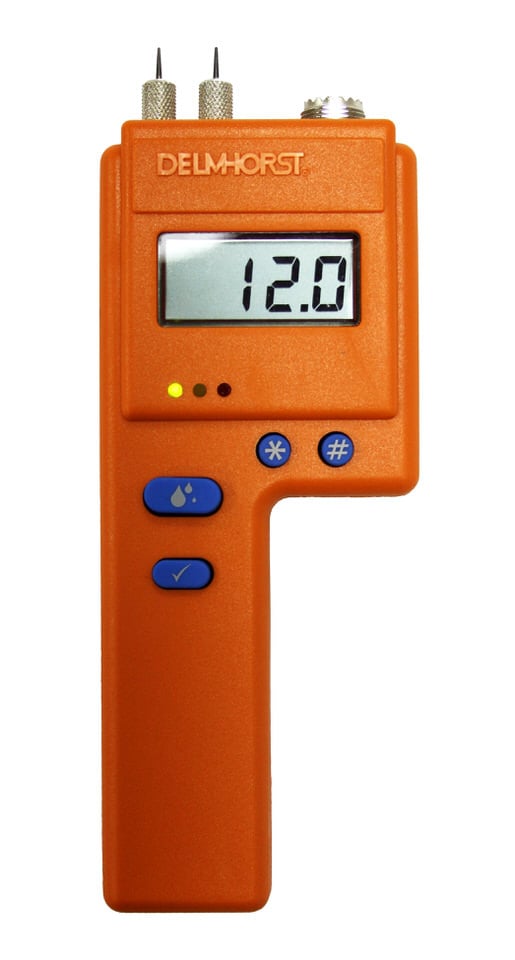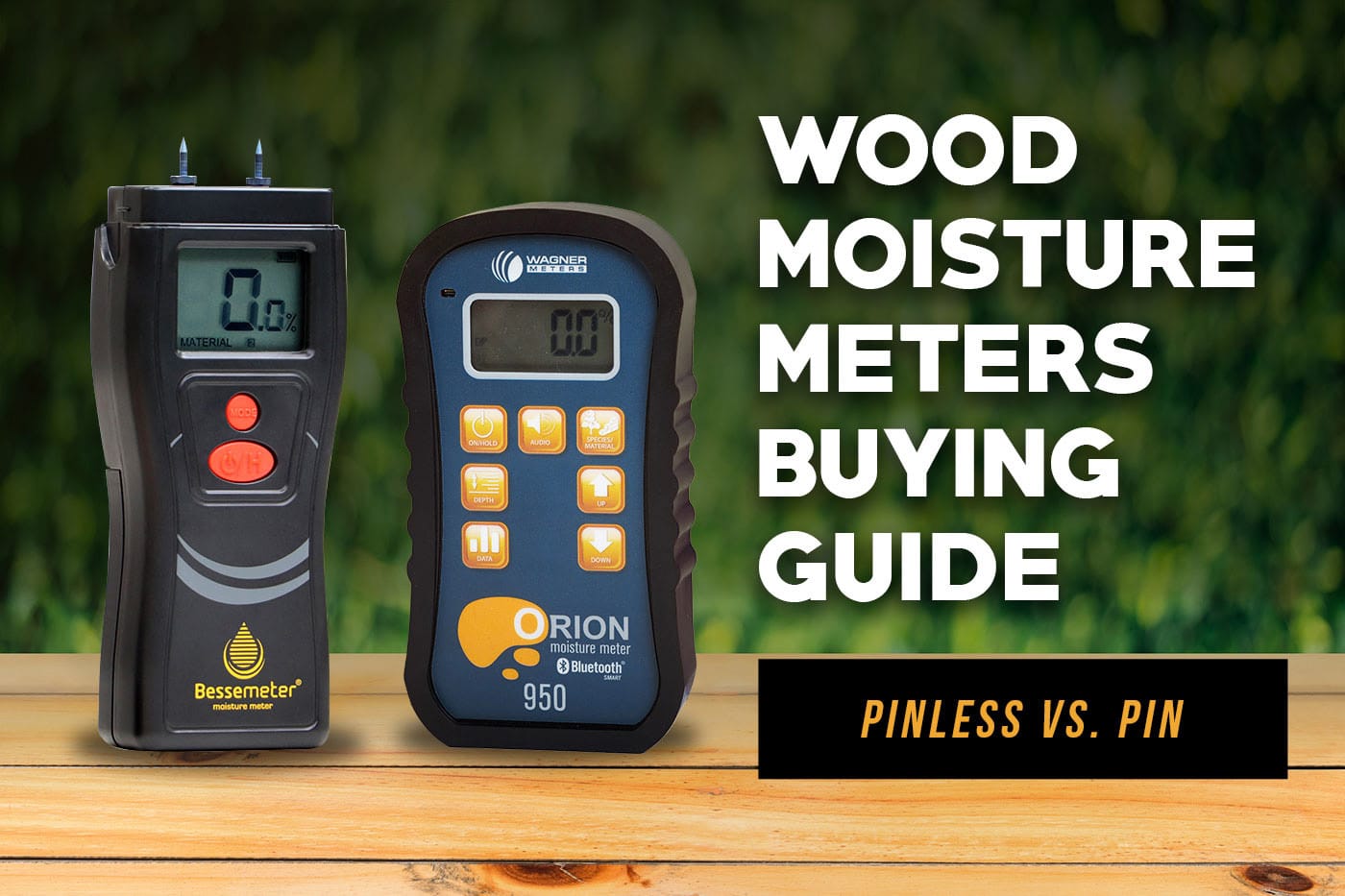Moisture Meter Reviews: Contrasting the most effective Versions for Professional and DIY Use
Explore the World of Wetness Meters: Whatever You Need to Know
In the realm of wetness meters lies a globe of precision and practicality that usually goes unnoticed. These gadgets, while relatively straightforward, hold a riches of information that can considerably affect various industries and applications. Comprehending exactly how moisture meters run, the various types offered, and their diverse uses can lose light on their relevance in ensuring quality and performance. By discovering the details of wetness meters, one can uncover a valuable device that transcends mere dimension, using insights that can make a substantial distinction in countless areas.
Just How Wetness Meters Job
Dampness meters operate by gauging the electrical conductivity or capacitance of products to identify the moisture web content existing - Moisture Meter. These meters are indispensable tools throughout various markets, including farming, construction, and woodworking. By utilizing various methods such as pinless or pin-type modern technology, moisture meters supply accurate readings that assist specialists make notified decisions
Pin-type moisture meters work by inserting the sharp pins right into the product being tested. On the other hand, pinless moisture meters use electromagnetic signals to scan a larger area without causing any damages to the product's surface area.
Despite the technique utilized, wetness meters play an essential role in stopping problems such as mold development, structural damage, or product defects caused by excess dampness. Recognizing how these meters work is necessary for making certain the high quality and stability of materials in various applications.
Sorts Of Dampness Meters
Given the critical duty wetness meters play in various sectors, it is important to understand the various types offered to professionals for properly examining moisture degrees. There are mainly 2 primary types of wetness meters: pinless and pin-type moisture meters.
Pin-type dampness meters use 2 pins that are placed right into the material being examined to determine the electric resistance between them. This technique is commonly utilized for wood, drywall, and other structure materials. Pin-type meters give accurate analyses at particular depths, making them excellent for determining moisture gradients.
On the other hand, pinless wetness meters use electro-magnetic sensing unit plates to check a larger location of the product without causing any damage. This kind appropriates for rapidly scanning big areas and is frequently utilized for flooring, walls, and ceilings. Pinless meters are hassle-free for taking readings on finished surface areas without leaving any visible marks.
Both kinds of moisture meters have their advantages and are selected based on the particular needs of the job handy. Understanding the differences between these kinds is crucial for experts to make precise dampness analyses.
Applications Throughout Industries
With diverse functionalities, moisture meters locate prevalent application throughout numerous sectors, aiding experts in making certain optimal conditions for materials and frameworks. In the agriculture market, dampness meters are indispensable for establishing the dampness content in grains, seeds, and hay, making certain quality assurance and preventing mold development. Building and construction specialists rely on moisture meters to assess the wetness levels in structure materials like concrete, timber, and drywall, which is essential for preserving architectural integrity and preventing concerns like rot or mold and mildew. The flooring sector makes use of moisture meters to gauge the dampness web content in subfloors before mounting various flooring, preventing pricey damages due to excess dampness. In the food market, moisture meters are made use of to keep an eye on and manage moisture go right here degrees in items such as grains, nuts, and dried fruits to keep quality and top quality. Furthermore, moisture meters play an essential function in the restoration and damage control sector by assisting specialists determine and attend to water damage in structures without delay. Throughout these diverse sectors, moisture meters are crucial tools for making sure the quality, safety and security, and durability of numerous products and products.
Tips for Utilizing Wetness Meters
Use the wetness meter's calibration settings to guarantee accurate analyses when determining the wetness material in different materials. Furthermore, make certain the meter is set to the correct dampness variety for the material you are measuring to get the most exact outcomes.

When using a pin-type moisture meter, insert the pins to the appropriate deepness advised for the product being checked. This makes sure that the wetness readings are taken from the proper deepness within the product, giving an extra precise representation of its moisture web content. For pinless dampness meters, keep in mind to maintain proper call with the product's surface to get reliable analyses.

Routinely examine and replace the batteries in your dampness meter to avoid incorrect analyses because of reduced power. When not in usage to prolong its lifespan and keep its accuracy, Store the meter in a completely dry and safe location. By following these pointers, you can optimize the performance of your wetness meter and acquire accurate wetness content measurements throughout various materials.

Maintenance and Calibration
To make certain the precision of dampness content measurements, normal maintenance and calibration of the wetness meter are vital actions in its appropriate functioning. Upkeep involves maintaining the wetness meter clean and cost-free from debris that might influence its readings. It is vital to comply with the supplier's guidelines for cleaning up to prevent damage to the tool. Furthermore, normal calibration is required to confirm the precision of the readings. Calibration changes the dampness meter to guarantee that it supplies regular and reputable results.
Calibration should be performed regularly, particularly if the wetness meter is made use of regularly or in critical applications where precise measurements are required. Numerous wetness meters include calibration devices or can be calibrated by professional services - Moisture Meter. It is recommended official statement to keep a log of calibration dates and results to track the performance of the moisture meter over time. By adjusting the dampness and keeping meter routinely, customers can rely on the precision of the dampness web content dimensions acquired.
Final Thought
To conclude, moisture meters play an essential duty in different industries by accurately determining the moisture web content of products. Understanding just how these gadgets work, the various kinds offered, and proper upkeep and calibration are vital for obtaining reliable outcomes. Whether in agriculture, building and construction, or manufacturing, the use of dampness meters assists make certain quality assurance and performance in processes.
Building and construction professionals count on wetness meters to analyze the wetness degrees in structure materials like drywall, concrete, and wood, which is vital for maintaining structural stability and stopping concerns like rot or mold. The floor covering industry uses dampness meters to measure the moisture material in subfloors prior to installing various floor treatments, protecting against costly damages due to important link excess wetness.Make use of the moisture meter's calibration settings to guarantee exact analyses when measuring the moisture content in different products. By adhering to these pointers, you can optimize the efficiency of your dampness meter and acquire specific dampness web content measurements across different materials.
In conclusion, moisture meters play a vital duty in numerous sectors by properly gauging the dampness web content of materials.